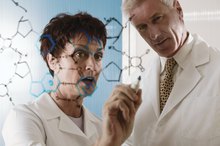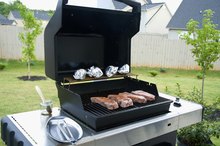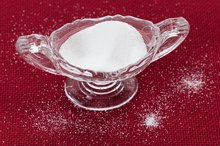Top 10 List of Harmful Chemical Reactions
Chemistry can be very amusing, but when combining different elements, it is very important to be cautious and know what will happen. This is because some reactants can be very dangerous chemicals released into the air, while other reactions are exothermic and will begin to heat up to very high temperatures. Therefore, you should always be careful when making chemical reactions 1. So, it is always advantageous to know the most harmful reactions in the field of chemistry.
Bleach
Household items can be very dangerous if they are mixed with other chemicals in your house. Bleach is one of the most reactive and dangerous chemicals to mix with anything. It could be hazardous to bleach with anything within our house, because we may never know the ingredients of our household products.
If bleach is mixed with the slightest amount of ammonia, a very toxic and dangerous fume will be let off into the air. Toxic chemical fumes are harmful to health.
- Household items can be very dangerous if they are mixed with other chemicals in your house.
- If bleach is mixed with the slightest amount of ammonia, a very toxic and dangerous fume will be let off into the air.
Acids and Bases
What Are the Dangers of Ethylene Vinyl Acetate?
Learn More
**Acids and bases can be very reactive together.
** In a science class (controlled environment), you may mix small concentrated amounts of acid and base together.
But if you are not in a controlled environment, avoid mixing acids and bases. They react very violently and will cause chemical burns.
- Acids and bases can be very reactive together.
- In a science class (controlled environment), you may mix small concentrated amounts of acid and base together.
Aluminum Metallic Powder
According to Ward’s Natural Science, aluminum’s metallic powder will react very dangerously when combined with acids.
The most dangerous elements for it to react with are alkalies. When these two chemicals react, hydrogen gas is released into the air, which is very flammable. Therefore, mixing these two chemicals is considered a fire hazard.
- According to Ward’s Natural Science, aluminum’s metallic powder will react very dangerously when combined with acids.
Magnesium Metal
What Are the Dangers of Methane Gas?
Learn More
Magnesium metal is very dangerous because it reacts with moisture, and moisture is readily available from multiple sources. An accident can take place if someone is unaware of this reaction and necessary precautions are not taken.
Magnesium metal and moisture produce flammable hydrogen, which coupled with aluminum’s metallic powder is a severe fire hazard. Magnesium metal reacts violently with many other compounds as well.
- Magnesium metal is very dangerous because it reacts with moisture, and moisture is readily available from multiple sources.
Hydrochloric Acid
Hydrochloric acid, commonly referred to as HCl, is an extremely strong acid and can be very reactive--especially with bases. If the concentration is high enough, it can cause chemical burns and put holes through cloth.
It corrodes most metals immediately and at the same time releases hydrogen gas. It is also extremely flammable.
- Hydrochloric acid, commonly referred to as HCl, is an extremely strong acid and can be very reactive--especially with bases.
- If the concentration is high enough, it can cause chemical burns and put holes through cloth.
Thermite
Thermite is produced when aluminum is oxidized by iron or when they are mixed together and heated slightly (which could happen naturally). This process can heat up to 2500 degrees Celsius.
The reaction is dangerous and almost unstoppable, because it cannot be smothered (because it provides its own oxygen) and it cannot be put out with water (burns wet). It will cause a fire and generate hydrogen gas into their air--making it even more impossible to stop.
- Thermite is produced when aluminum is oxidized by iron or when they are mixed together and heated slightly (which could happen naturally).
Acid Rain
Acid rain is a man-made calamity. It is formed when sulfur dioxide is emitted into the environment.
**The sulfur dioxide, which is formed by burning coal and oil, goes up and mixes with the clouds.
** Since hydrogen peroxide is present in the clouds, sulfuric acid is produced from the chemical reaction between hydrogen peroxide and sulfur dioxide. It is called acid rain.
- Acid rain is a man-made calamity.
- The sulfur dioxide, which is formed by burning coal and oil, goes up and mixes with the clouds.
Nitroglycerine
Nitroglycerine is the product that is used to make most explosives. It is a very reactive ingredient that will explode very easily. Nitroglycerine is very unstable and can be commonly found as a liquid, powder or tablet.
Global Warming
Global warming is not a chemical reaction itself, but rather a consequence of a long chain of chemical reactions 1. Chemical reactions that cause global warming are ones that produce carbon dioxide, sulfur dioxide, methane and other greenhouse gases 1.
Chemical Weapons
Chemical weapons are the most dangerous, harmful chemical reactions ever made 1. They are built to be destructive, and that is exactly what they are. Chemical weapons, such as the atom bomb, use several different chemical reactions to produce large amounts of heated gas--which not only causes a huge explosion, but produces gases that can be harmful to people hundreds of miles away 1.
Related Articles
References
Writer Bio
Eric Bagai is a senior writer in the high-technology field, to which he can offer more than seven years of experience as a copywriter. He has written several articles for eHow and holds a Master of Arts in creative writing from Oregon State University.








